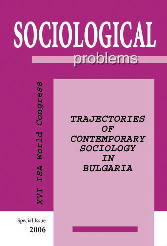Semiotics and Phenomenology in the Social Study of Science. About Some Limitations of Actor-Network Theory
Semiotics and Phenomenology in the Social Study of Science. About Some Limitations of Actor-Network Theory
Author(s): Tihomir MitevSubject(s): Social Sciences
Published by: Институт по философия и социология при БАН
Summary/Abstract: The paper aims to put a notion for discussion - the notion of the heterogeneous micro-community that Ivan Tchalakov comes upon and lays down in his book Making a hologram (Tchalakov, 1998). My research focus is on the conceptual apparatus of Emanuel Levinas, used in Tchlakov’s work: a possibility to integrate the notion of the world built up of heterogeneous communities (ties of human and non-human actors) with some of the theses of non-orthodox phenomenology. The idea is some of the foundations of Actor-Network Theory – such as activity, sign, irreduction – to be ‘read’ through Levinas. The main objective is to search for (on a theoretical level) reasons for the following: First, the notion of the ‘heterogeneous couple’ should not be just a particular and isolated case. And second, it could possibly refresh the ANT in a certain way. The paper is built according to the following logic: - the first part introduces the notion of the ‘heterogeneous couple’, as it was suggested in Tchalakov’s work. - the second part presents briefly the theory of Levinas from a certain point of view. - the third part explicates the tensions as well as the common places between some of the principles of the non-orthodox phenomenology of Levinas and the Irreductions program of Latour.
Journal: Социологически проблеми
- Issue Year: 38/2006
- Issue No: Special
- Page Range: 64-75
- Page Count: 12
- Language: English
- Content File-PDF

